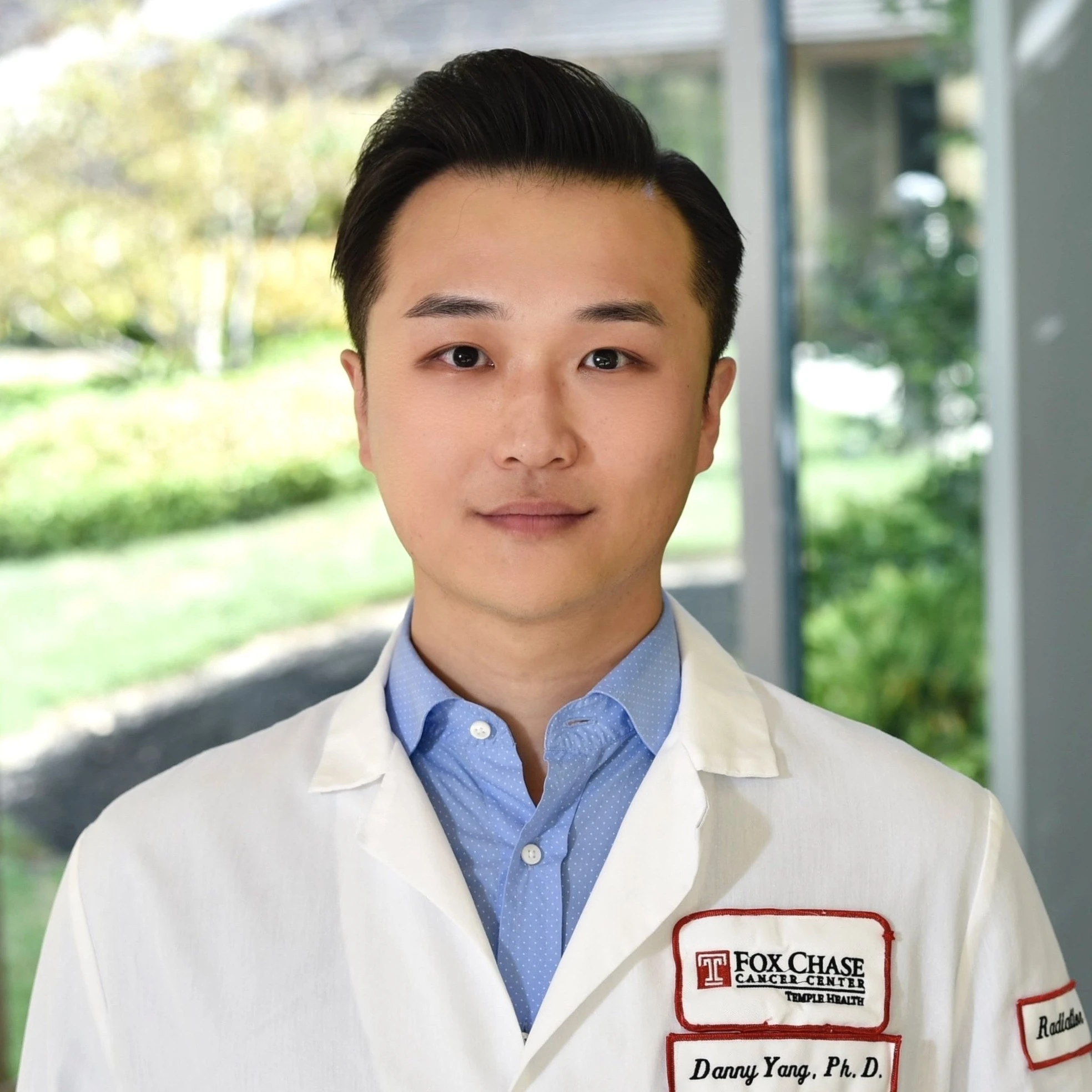3168 - Maximizing Tumor Growth Delay: The Impact of Carbamide Peroxide Catalysis in Megavoltage Radiodynamic Therapy with 5-Aminolevulinic Acid
Presenter(s)

D. M. Yang, D. Cvetkovic, L. Chen, and C. M. C. Ma; Department of Radiation Oncology, Fox Chase Cancer Center, Philadelphia, PA
Purpose/Objective(s): The cytotoxicity induced by reactive oxygen species (ROS) is leveraged to target cancer cells in radiation therapy. A novel 5-aminolevulinic acid (5-ALA)-mediated radiodynamic therapy (RDT), which integrates radiotherapy and photodynamic therapy (PDT), has more tumoricidal efficacy than conventional radiation therapy. Based on multiple in-silico and in-vitro studies, the emission of Cherenkov light, which is used for activating PpIX, depends on the photon energy. ROS is produced not only by ionizing radiation but also by Cherenkov light-activated protoporphyrin IX (PpIX), which is metabolized from 5-ALA. Moreover, PpIX in X-ray irradiation in-vitro catalyzes carbamide peroxide (PRX) to generate ROS, enhancing its catalytic yield. To further explore this, an in-vivo mouse model study was conducted to investigate the impact of carbamide peroxide as a coenzyme catalyst on a megavoltage 5-ALA-mediated RDT.
Materials/Methods: An in-vivo murine small-cell lung cancer model in regular immunocompetent mice was examined. The tumors (n=200) were randomized into ten groups: control (untreated), 5-ALA alone, PRX alone, 5-ALA with PRX, and RDT (RT with 5-ALA) with or without (w/o) PRX using 6, 18, or 45MV photons. 5-ALA was administered intravenously at 100 mg/kg 4 hours before irradiation, while carbamide peroxide was injected intratumorally at 60 mg/kg 3-5 minutes before treatment. Each tumor received 4 Gy in a single fraction with 6, 18, or 45 MV photons. Tumor volumes were measured using 1.5T MR on the day of treatment (prior to the treatment), 7, and 14 days post-treatment. Two-way repeated ANOVA with Bonferroni correction was used to compare each treatment group to determine the statistically significant difference in tumor growth.
Results: Additional tumor growth delay was observed when the tumors were irradiated with higher photon energy. The combination of 45MV RDT with PRX significantly delayed tumor growth by 58.8 ± 5.7%, 41.3 ± 5.4%, and 14.6 ± 1.3% compared to the control, 6MV RDT w/o PRX and 45MV RDT w/o PRX on 14 days post-treatment, respectively. The additional tumor growth delay showed 7 days post-treatment with RDT groups with PRX compared to w/o PRX groups. The catalytic effect of carbamide peroxide on RDT became evident 7 days post-treatment.
Conclusion: The catalytic effect of photon irradiation, PpIX, and carbamide peroxide was observed in-vivo 5-ALA RDT. The enhancement results suggest that the additional ROS produced by PRX prolongs the tumor growth delay in 5-aminolevulinic acid radiodynamic therapy.
